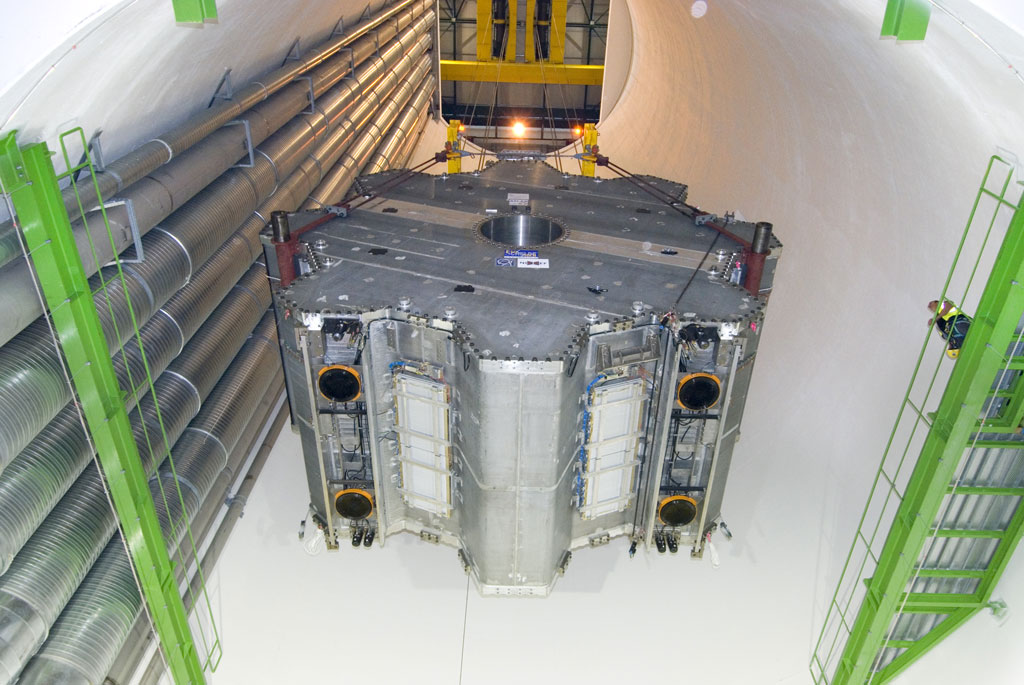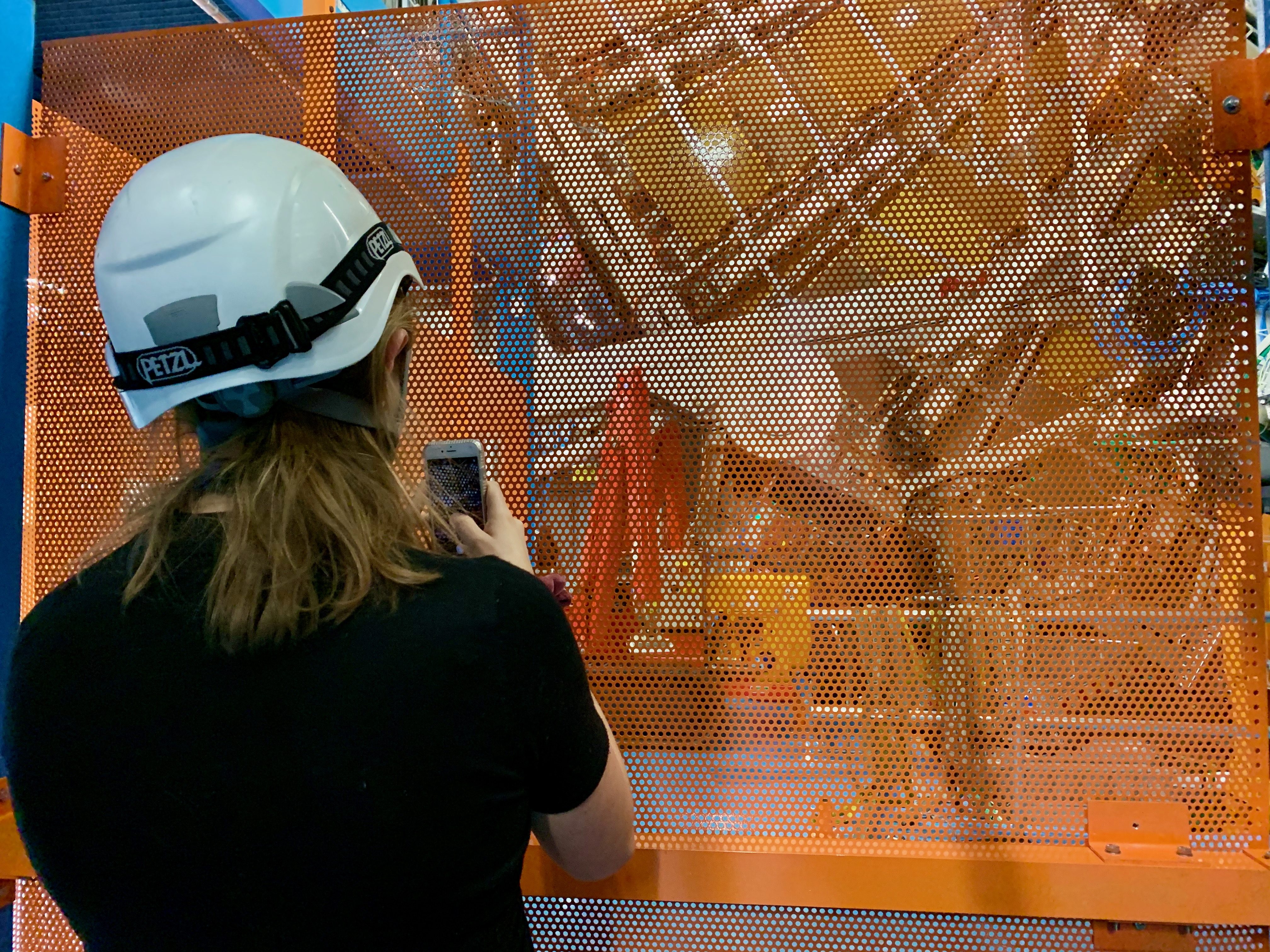The complex and spectacular lowering into the cavern of the huge end-cap toroid magnet on side A
13 June 2007 | By

On 13 June 2007 the first of two giant toroid magnet end-caps was lowered into the ATLAS cavern on the A side. This complex and spectacular operation was completely successful. After the impressive transport from Building 191 to Point 1, the toroid magnet end-cap (ECT-A) was transferred into the surface building, SX1. One of the crucial points of this project was to design all the tooling and installation sequences taking into account the building infrastructure dimensional constraints. The movement of the 240-ton magnet and 12-m diameter toroid magnet end-cap was achieved using a hydraulic gantry.
On Tuesday May 29, this first of two toroid magnet endcaps was transported from its test station next to B180 to the front of the ATLAS surface building SX1. The 240-ton and 12-m high toroid magnet endcap moved on a special trailer at walking speed, got over various slopes and survived the difficult turn left in front of the entrance at gate B.



The toroid magnet had to wait for almost two months to commence its journey to its destination as the cryogenic test down to 80K was already successfully completed by early April. In the next days, the toroid magnet slid into the SX1 surface building, turned around its axes by 90 degrees and then gently slid over the first shaft and landed on top of the A-side shaft. There, it descended by 5 m into the shaft using special lifting tooling before it could be connected to the 2x140 tons overhead cranes, which let the toroid go further down to the cavern.



